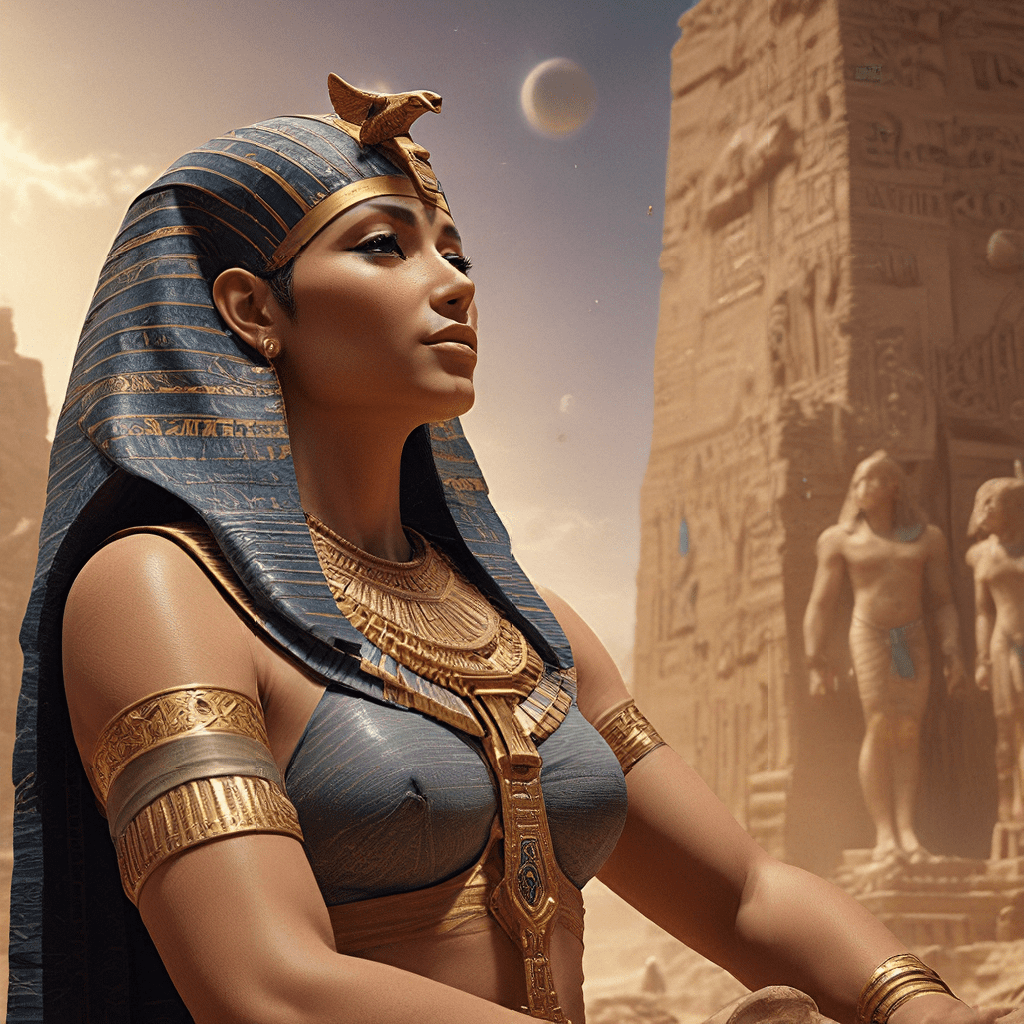The Egyptian Creation Myth: A Journey into the Cosmic Beginning
The ancient Egyptians, renowned for their sophisticated civilization and intricate religious beliefs, held a profound fascination with the cosmos. Their creation myths, passed down through generations, offered a unique perspective on the origin of the universe, shaping their worldview and influencing their daily lives. These myths, often intertwined with their elaborate rituals and artistic expressions, provide a window into their understanding of the world and their place within it.
1. Introduction: A Universe Birthed from Chaos
Ancient civilizations across the globe have grappled with the question of existence – how did the universe come to be? In the case of ancient Egypt, their creation myth, like many others, begins with an abyss, a realm of primordial chaos. From this seemingly empty void, order emerged, shaping the world as we know it. This tale of creation wasn’t just about explaining the physical world. It also served a deeper purpose – to connect the Egyptians to the divine and to understand their place in the cosmic order.
2. The Ennead: Nine Divine Beings Shaping the World
The Egyptian creation myth centers around a group of nine deities known as the Ennead. These powerful beings embody the primary forces shaping the universe. Atum, the self-created god, stands at the head of the Ennead, representing the source of all creation. From Atum, Shu, the god of air, and Tefnut, the goddess of moisture, emerge. Their union gives birth to Geb, the earth god, and Nut, the sky goddess. This divine family expands with the birth of Osiris, Isis, Set, and Nephthys, who play pivotal roles in the creation and continuation of life.
3. The Primordial Waters: Nun and the Emergence of Atum
At the heart of the creation myth lies Nun, the vast primordial ocean encompassing infinite darkness and chaos (or “nu”). It represents the state of nothingness before creation. From this infinite abyss, Atum, the self-created god, emerges. As the first being to exist, Atum embodies the potential for creation. From the chaos of Nun, he brings order and light into the universe. He emerges, a self-born god, marking the transition from nothingness to existence. Atum’s self-creation is a significant event in the myth, symbolizing the limitless power of the divine.
4. The Birth of Air and Moisture: Shu and Tefnut
Atum, having emerged from the chaotic waters, initiates the process of creation. He manifests Shu, the god of air, and Tefnut, the goddess of moisture, through his sheer power of thought. This act, known as “thought-creation,” highlights the profound power and influence of the divine mind. The creation of Shu and Tefnut marks the emergence of duality and balance in the universe. Air and moisture are essential elements for life, representing the interplay of different forces that create the world. This duality, represented by Shu and Tefnut, sets the stage for the creation of the physical world.
5. The Earth and Sky: Geb and Nut
The union of Shu and Tefnut, representing air and moisture, gives rise to Geb, the earth god, and Nut, the sky goddess. They are the physical embodiment of the universe, representing the two primary elements that form the world. Their creation signifies a significant step in the creation process, marking the separation of earth and sky. In the myth, Geb and Nut are depicted as intertwined, symbolizing their connection and the symbiotic relationship between earth and sky. This separation of earth and sky, creating the physical world as we know it, marks the completion of the initial stage of creation.
6. The Cycle of Life and Death: Osiris, Isis, Set, and Nephthys
The creation of the world is followed by the emergence of the first generation of gods – Osiris, Isis, Set, and Nephthys. They are born from Geb and Nut, embodying the cycle of life and death, nature, and human existence. Osiris, the king of the underworld, assumes dominion over the afterlife, ensuring justice and order in the realm of the dead. Isis, the goddess of magic and motherhood, embodies the nurturing and restorative powers of the divine. Set, the god of chaos, represents the forces of disorder and darkness. Nephthys, the goddess of protection, embodies the supportive and protective aspects of the divine. Their actions and roles shape the universe, influencing the lives of humans and the natural world.
7. The Role of the Sun God: Ra and the Cosmic Order
In the Egyptian creation myth, Ra emerges as the sun god, bringing light and warmth to the world, illuminating the universe and giving life to all living things. His journey across the sky, representing the passage of time and the cycles of day and night, sustains the order of the universe. Ra’s prominence in the myth reflects the importance of the sun in Egyptian life. His presence symbolizes the divine power that governs the cosmos, ensuring its continuous existence and sustaining life. The Egyptians believed that the sun god, Ra, played a crucial role in the creation and maintenance of the universe, maintaining cosmic order and ensuring the continuation of life. This belief highlights the importance of the sun in their culture, reflecting their deep respect for the forces of nature and their understanding of the interconnectedness of all things.




